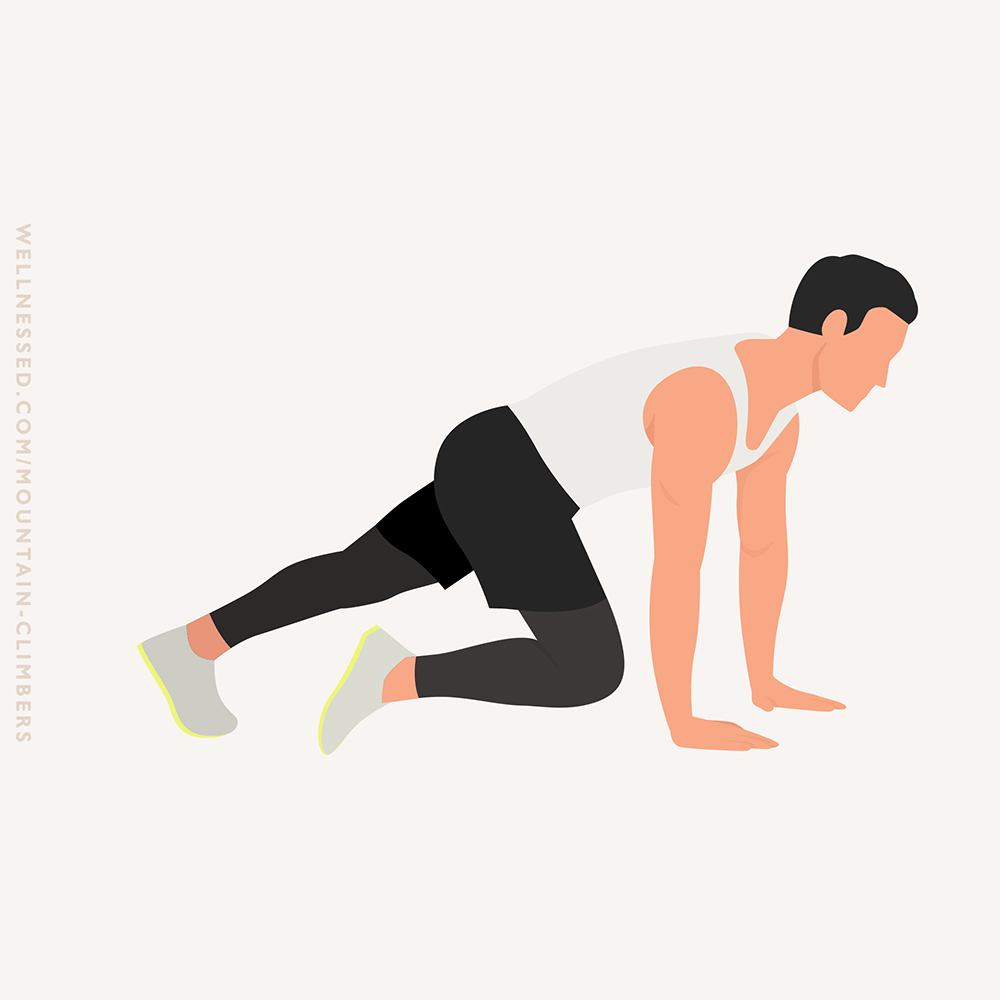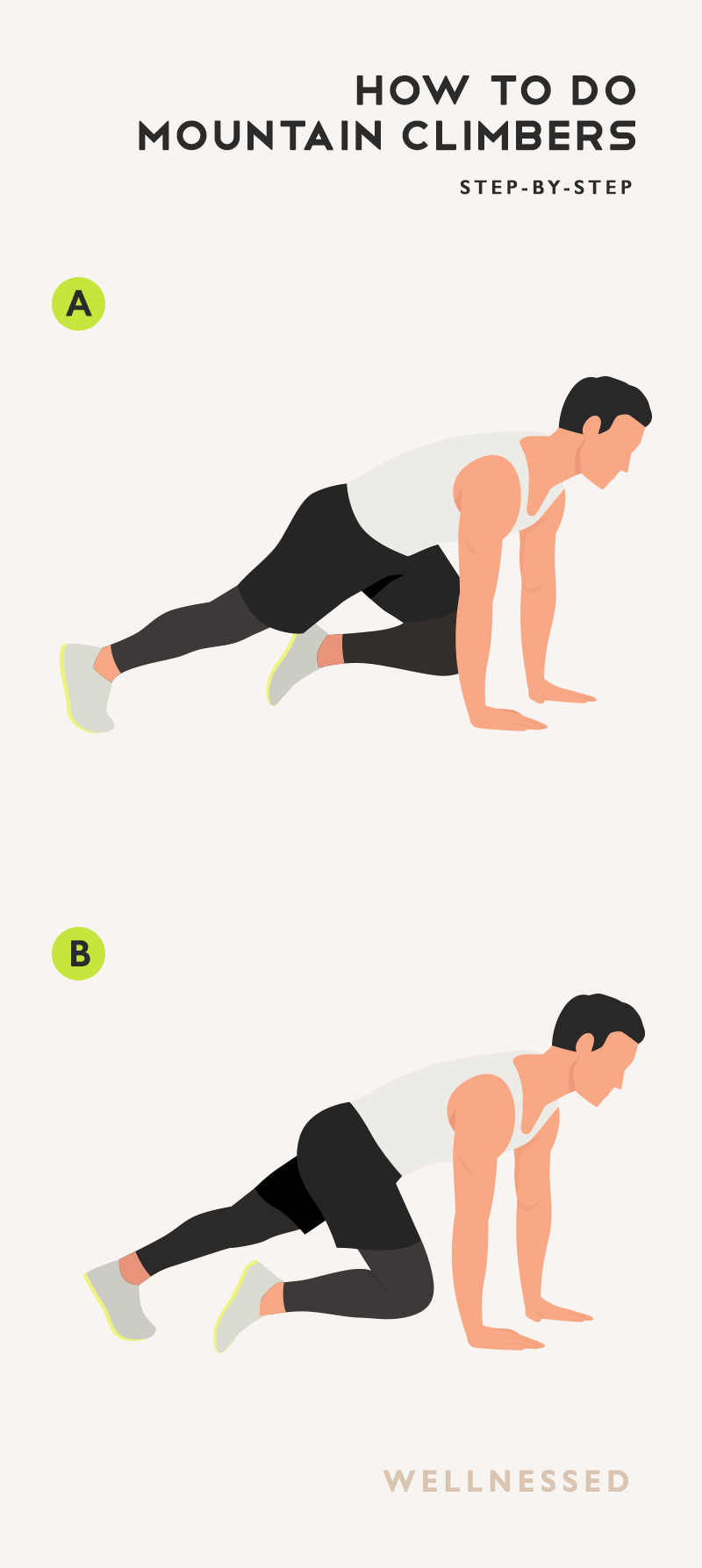- Main muscles worked: Abs (rectus abdominus), butt (glutes), and hip flexors (iliopsoas)
- Other muscles: Upper legs (quadriceps, hamstrings), shoulders (deltoid), back of arms (triceps), chest (pectoralis major)
- Exercise type: Plyometric
- Equipment: None
Benefits of Mountain Climbers
Mountain climbers deliver a no-frills leg, core, and cardio workout. It’s a move that strengthens your muscles while also burning a lot of calories. A simple yet effective exercise, mountain climbers are a common feature in circuit training and cross-training workouts.
Mountain climbers develop shoulder stability, lower body quickness, hip mobility, and agility. This makes them a great exercise to improve athletic performance, especially running.
Although primarily a lower body workout, mountain climbers are also tough on your upper body. Furthermore, it makes for an intense cardio workout without the need for lots of space or gym equipment. After a few seconds you’ll feel your heart and lungs working, because the leg muscles demand a lot of oxygen as you drive them back and forth.
Speak to your doctor or physical therapist if you have a condition that prevents you from doing a mountain climber safely and effectively – such as if you have weak wrists, elbows or shoulders, you are unable to hold a solid plank position for an extended time, you have knee or hip issues, or you find that impactful activities hurt your feet. They might advise you to avoid or modify this exercise.
Tips
Mountain Climbers: Perfecting Form
Get the most from mountain climbers and minimize your risk of injury by following these simple tips.
- Neck. Keep your neck neutral and avoid lifting or lowering your head.
- Shoulders. Keep your shoulders over your hands and your arms vertical to provide a solid platform for this exercise. It’s common for people to shift their weight back and raise their butt higher as they become tired. This takes the work away from the core and increases stress on the shoulders.
- Abs. Brace your abs throughout and do not allow your hips to drop, which may happen as you become more fatigued and raises the likelihood of back injury.
- Hips. Do not lift your hips. Keep your upper body straight and roughly parallel to the floor. Also try not to let your lower back become rounded – this is another postural problem that increases the risk of injury.
- Feet. Push off the balls of your feet and do not allow your hips, knees or ankles to roll inward or outward.
- Movement. Keep your movements sharp and light. Do not sway your shoulders from side to side, instead keep your spine long. Aim for a smooth and steady rhythm.
Adjusting the speed and the length of your set will make mountain climbers easier or harder.



